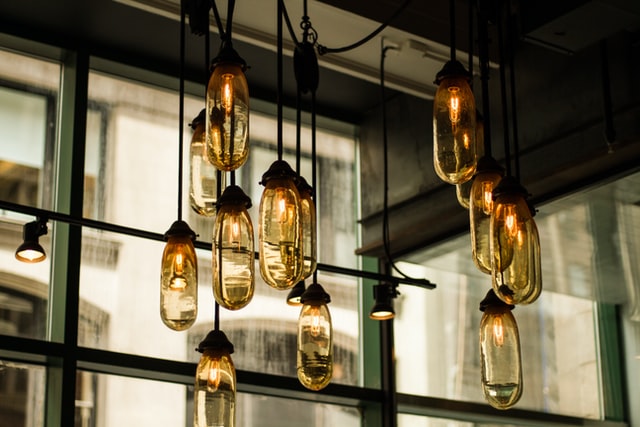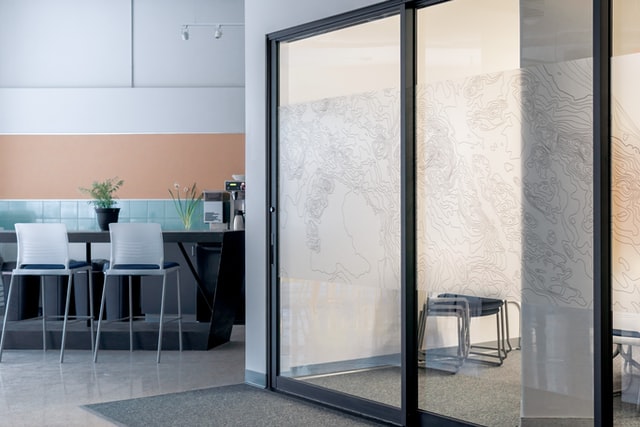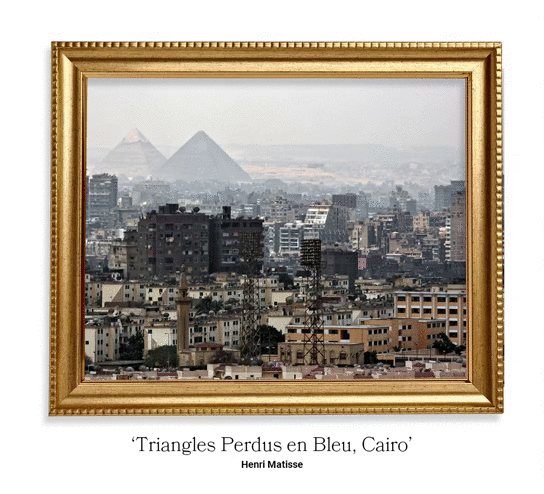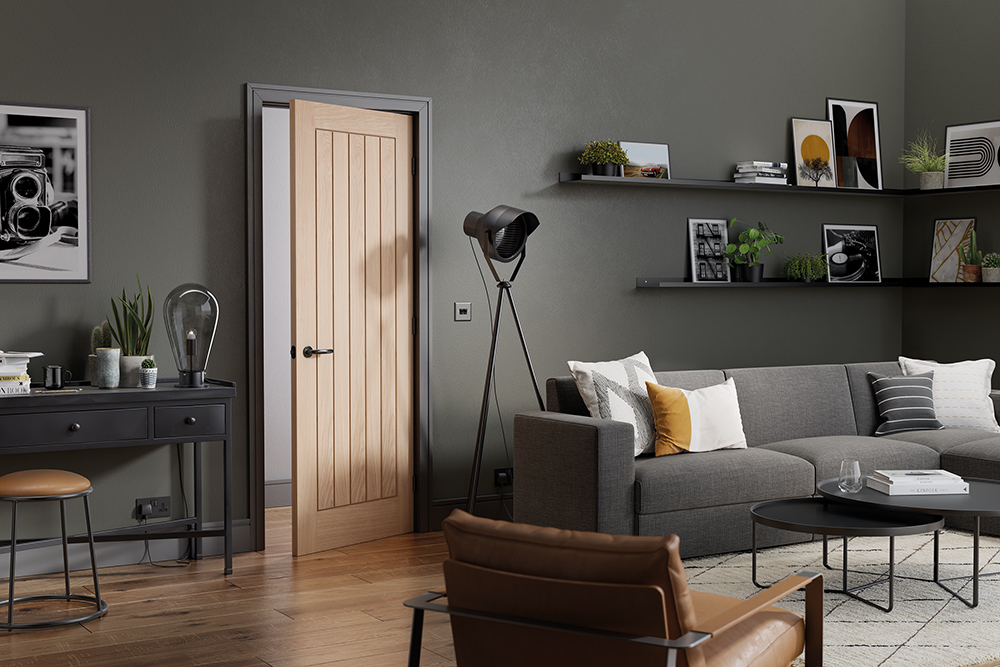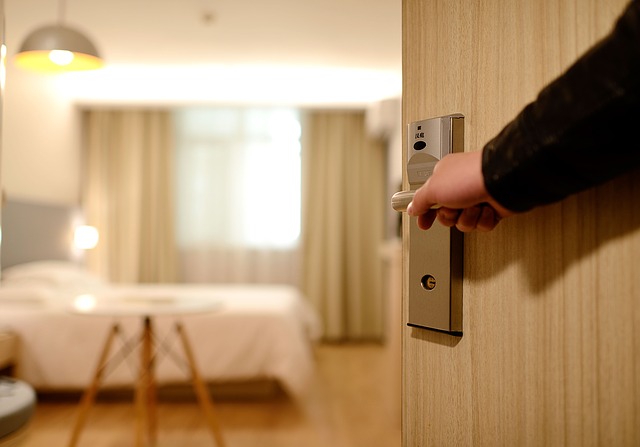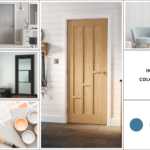Express Doors Direct ▸ Blog ▸ What is Industrial Style Decor?
Last updated on May 16th, 2022 at 01:04 pm
Industrial style interior design takes influence from late 19th and early 20th century architecture. Whilst the industrial revolution eased its presence in the UK, manufacturing and production became globalised. In an attempt to save costs, workplaces shifted. An abundance of disused factories and warehouses were left stationed in its wake.
In an attempt to utilise these buildings, they were repurposed into luxurious living spaces. Keeping the framework of the structures, the core elements of the industrial style were born.
Exposed brick, distressed metals and concrete, designed to last for many years, became the key elements of the industrial style. Born from recycled materials, these features became staple.
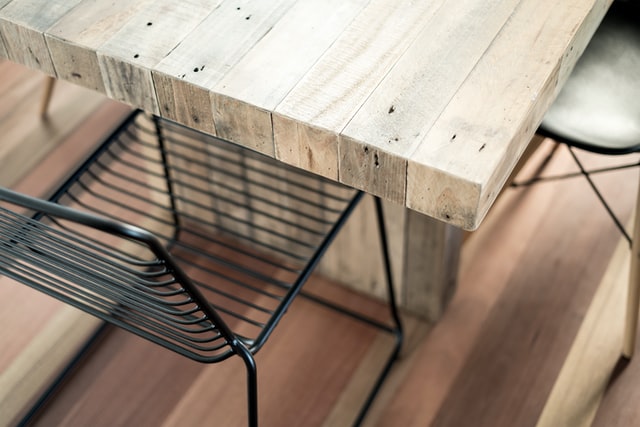
Key elements of the Industrial Style
Industrial style decor has always consisted of a set of core elements. Knowing how to apply these into contemporary interior design is important to pulling off the look.
- Open plan living: maximum flow of natural lighting forms a key part of the industrial style. The open plan layout of large factories requires excessive light flow to brighten the area. First achieved by using large windows present in factories, different techniques are now present to achieve both open plan living and natural lighting. High ceilings are also an effective part of industrial style decor.
- Heritage-style doors and windows can be used to create partitions between rooms. This is particularly useful in buildings that lack an open floor plan. By utilising sleek metal frames, these industrial style doors can create the sense of an open layout. They are effective at allowing light to flow naturally throughout a building.
- Combining wood and metal: the industrial style originated from the repurposing of abandoned factories and warehouses. As such, the recycling of their long lasting materials is prominent within its interior design. Combining the natural elements of wood with the manufactured feel of iron and steel stays true to the recycled nature of industrial style decor. Utilitarian materials should be relished. Their strip-backed look needs to be maintained throughout the decor.
- Highlight framework: focus on exposed structural components. Wooden beams, iron frameworks and exposed pipes should be featured, not ignored.
- Colour: Palettes need to be adhered to and carefully considered. The foundation of each palette should revolve around a blend of gray, black and white. There is room for personality, however, especially in more modern styles of industrial decor. Though darker tones have been popular for quite some time, do not be afraid to add more vibrant features. More outspoken colours should be used sparingly as to not contrast with neutral tones
- Silhouettes: utilise squared lines and block shapes. The utilitarian design promotes cohesiveness with rugged materials. Again, avoid using too many bright colours.
- Accessories: as the industrial style focuses on the ruggedness of a building’s structure, accessories should be considered carefully. The open plan style should not be left feeling cluttered and obstructed. Utilise metal structures and other “recycled” themed objects.
Is Industrial Style decor still in?
The industrial style is forever changing. Whilst there are less and less conversions available, the need to maintain the exposed look is becoming less prevalent.
However this doesn’t mean that the industrial style isn’t influencing interior design enthusiasts to this date.
Whilst interior design evolves, many elements of the industrial style have also prevailed. Slight adaptations have been implemented to shape it in the present day.
Depending on the feel interior designers are looking to achieve, many additional efforts have been made to make the style more suitable. Many combinations and twists have been made to give interior designers more leeway when it comes to design. This helps adjust to different styles of houses.
As the industrial style gained popularity, smaller houses, rural houses and other buildings less suited have adapted its features.
What is rustic industrial style decor?
Rustic industrial style decor is a new and rising take on contemporary interior design. It takes influence from both urban and rural notes.
Mixes between man-made, recycled metal furnishings are juxtaposed with the rural cottage-style features.
Fresh wicker furniture complements the open brick layout of the industrial style. Natural looking textiles of rural influence combine with the neutral tones of the industrial style decor.
Earthy tones mix distressed wood and metal, without imposing on their unique styles.
Open frameworks of buildings are prominent, boasting wooden beams common in the rural style. This exposed element intertwines with the industrial style without straying too far from its rural roots.
How to get the look
This style is prominent in smaller homes that do not have the opportunities for more open plan layouts. It utilises the key elements of the industrial design that do not require large living areas to achieve a desired result. Suitable for smaller homes that want to pull off a contemporary feel.
- Natural-looking materials: wood, metal, stone, glass, and brick. Combined with fresh materials such as wool, linen, and leather, the industrial feel is complemented by the bucolic setting.
- Earthy details: Distressed wood retains the grainy texture associated with the natural elements of the rustic style. Combines exposed screws, metal hardware and recycled utilitarian materials with more earthy tones. A contrast of dark and light features can be achieved by either the rural or industrial influence on the style.
- Boundaries are limited: Pairing a wooden chair with a metal table combines the two styles effectively. They create one cohesive look that creates the rustic industrial style. Do not be afraid to mix and match furnishing and accessories from either style.
What is modern industrial style?
The modern industrial style originates from old conversions of abandoned factories, barns, churches and warehouses. It combines distressed woods and metals with exposed framework and other utilitarian materials.
Compared to its other industrial counterparts, the modern industrial style features copper furnishings to a sense of class and allure.
Suitable in modern buildings with larger kitchens. Due to the range of copper furnishings available with kitchen hardware, modern industrial decor is best suited for more open areas.
How to get the look
- Open plan concepts: the outspoken charm of copper can be daunting in confined spaces. The reflective material requires an abundance of light and space to be fully appreciated without imposing on the appearance of the room.
- Modern details and industrial charm: brick walls and sleek metals are major components of modern industrial style. Modern day appliances mix well with old industrial hardware and is a simple way to incorporate the style. Taps, cupboard door handles, and other trimmings can be used to accent the furniture or framework of the building.
- Unique lighting: works well with the incorporated high ceilings common with older building conversions. Retro, partitioned framework lamps and shades also pertain to the open floor plan. These also allow excessive light flow through the building, also common with the industrial style decor.
- Handcrafted floors: concrete and wooden floors are popular within the style. The natural effect of the wood with its knots and grains adds manufactured character to decor. The cold feel of hardwood and concrete floors also complement the neutral tones incorporated within industrial style. Adding faded or distressed rugs also make a bold statement without detracting from the natural elements.
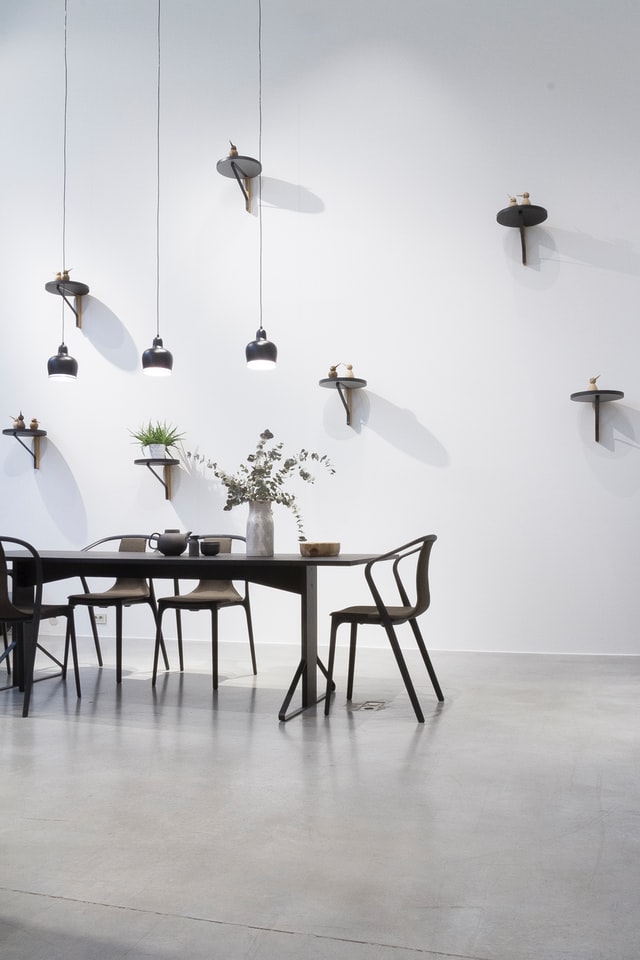
What is urban industrial style?
Urban industrial style became prevalent in 1950’s America. Creative individuals utilised the cold open spaces of abandoned buildings to complement their creative capabilities.
As opposed to refurninishing abandoned factories, they took the key components of their furnishings and implemented them in more controlled and contemporary effects.
The style reuses and recycles the hard lasting materials of the industrial buildings. The neutral palette of cast iron columns and concrete floors allow room for more creative features.
Urban industrial decor reinforces the cold and raw features that are generally concealed in industrial interiors. Exposed pipelines and concrete furnishings are used to cast a cold and neutral atmosphere. As its foundation does not impose on the eye, it creates opportunity for more bespoke and artistic features.
How to get the look
- Cement and concrete: a key feature in maintaining the cold and neutral feel to the style. The texture and finish blends naturally with itself and creates a smooth finish to complement with unique accessories. The versatility of cement also allows it to be used almost seamlessly within a building. Can be used for flooring, countertops and walls, allowing more space to be utilised for furnishings.
- Exposed bricks: used to maintain the exposed and raw feel of urban industrial decor. Makes use of present materials to complement additional furnishings.
- Iron, smooth wood and stainless stainless steel: using less grainy wood, the urban industrial style opts for cleaner finishes. Stainless steel and iron frameworks also detract from the distressed feel to provide a sense of modernity.
- Lighting: stainless steel or iron framed lamp shades. These reflective materials help cast light into the open areas and onto the cold surfaces. It is also common to see more utilitarian lamps that hang over work areas.
- Palette: popular schemes consist of grey, brown and black. Though a fairly neutral palette, this scheme provides a manufactured feel to the style. Mixed with smoothly finished wood, the sense of production is kept in check.
- Construction materials: the exposed structure of buildings retains the feeling of construction. Uncovered beams, pipes, and other components that make up the framework of the building should be left on show.
- Design icons: it is not uncommon to utilise other bespoke design styles. These should be used sparingly as to not detract from the overall modern industrial feel.
What is industrial farmhouse style?
Industrial farmhouse style incorporates the cosz feel of the countryside with rugged, edgy lines. It is the perfect implementation of the traditional industrial style outside of an urban setting. Bleak, sharp edges provide a manufactured look.
Warm tones and natural materials are incorporated in juxtaposition to bring some modernity to countryside living. The two styles seamlessly blend.
With open brick fireplaces and feature walls of country living, the industrial design is already partly observed.
Softer furniture with cotton throws, wool cushions of sherpa rugs add a sense of homeliness. Exposed walls and beaming complement the warmth of the countryside style and create the essence of farmhouse industrial decor.
How to get the look
- Metal accents: a feature of the industrial home decor that has carried through to the industrial farmhouse style. Exposed pipes, plumbing, and other unfinished elements are already noted within barnhouse conversions. Metal chairs, tables and other furnishings provide the finishing touches.
- Rough materials and finishes: combine the cold concrete floors and finishings of the industrial style with a warmly sheepskin rug. Add lots of texture with fluffy cushions and a leather sofa.
- Lighting: largely pertains to the industrial influence, with sleek frames that emit plentiful light.
It is important to understand the differences between each style. Though they all pertain to the industrial style, their slight differences are what attribute them to their own bespoke style. Be careful not to mix and match these styles to create conflicting tones that no longer complement each other.
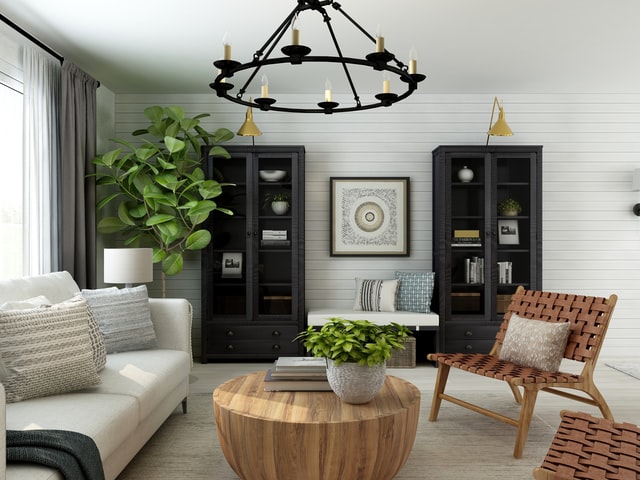
How to embrace industrial style: Tips and Trends in 2021
Whilst the industrial style is evolving, features of the decor are constantly emitted. Whilst this occurs, more unique takes on the industrial influence are gaining popularity.
Now both rural and urban environments are adapting the industrial design, we are seeing the rise of more contemporary styles, such as urban industrial style and farmhouse industrial style.
As more conversions are completed, there is less need to maintain the industrial style within the city. Interior design enthusiasts are finding new and innovative ways to incorporate this style into the modern era.
Heritage style doors and windows can be used to showcase a garden area or patio. These also pertain to the open plan feel without obstruction. These industrial style doors also boast sleek aluminium frames that complement the decor.
1. Minimalist is in
2021 still sees the prominence of the minimalist approach to decorating. The loud features of patterned upholstery, throws and cushions upon bleak flooring and walls creates the contrast between maximalist and minimalist. Mix large-scale decor with small-scale decorative detail.
2. Sculpted Furniture
Taking centreplace in the neutral aesthetic is crafted furniture. Taking on wild shapes and forms, these chairs and sofas can provide the character and physique in an otherwise quiet room. Framed sculptures and accessories should complement the furniture, creating an almost jigsaw-like feel to the atmosphere.
3. Bold Palettes
Whilst greys are on their way out this year, bolder palettes are gaining popularity. The pale elements of the industrial palette are featured with definitive colours; deep reds and solid blues adorn accessories that detract from the neutrality, but add style and sheen.
4. Rustic
A more modern take on cottagecore, homely cottons and hard wood furnishings are in. Take influence from the rustic industrial style, and complement exposed walls with sherpa rugs and textured furniture.
5. Farmhouse Industrial
Combined with warmer tones of yellow and amber, exposed wooden beams are outlined on the pastel colours. With a more folksy vibe, embroidered furnishing and cushions should be used.
6. Earthy Shades
Greys have been replaced with greens and browns. Solid greens complement wooden furniture upon cream bedding and flooring.
7. Traditionalism
Wicker accessories and wooden furniture complement the industrial style. Classic art and vintage ornaments create a harmony between the minimalist industrial and traditional home decor.
8. Shabby Chic
Distressed woods, especially painted woods define the shabby style. Also part of the industrial design, mixing vintage with modern.
9. Industrial Office Space
Metal furnishings and utilitarian lamps light the way for the home office. Minimalist metal features and frames leave the room feeling less cluttered and more productive.
10. Snug Rugs
Big fluffy rugs adorn hardwood and concrete floors. Providing a sense of warmth and homeliness to the cold industrial flooring, sherpa rugs are a stylish way to soften the edges.
11. House Plants
Luscious greens add life to the bleak industrial. The contrast of new life and recycled furniture creates calm in the most manufactured of places.
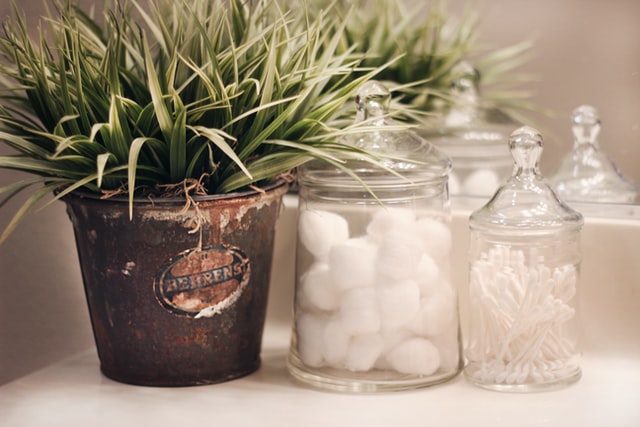
Industrial decor has been evolving since the late 19th century, and even in 2021 it still holds its popularity. Whilst more affordable additions to the trend become readily available, more interior design enthusiasts are finding new ways to add unique and stylish spins on the trend.
Related Posts:
"It is about the realities of what makes for an attractive, civilized, meaningful environment, not about fashion or what's in or what's out. This is not an easy job."
– Albert Hadley
Available in a range of sizes, designs and colours with a #MadeToMeasureDoors service available too.
Email [email protected] to book in for 2024.
















































